Roborock Q5 vs Q7, which should I choose? For the general evaluation, the Q7 offers a more thorough cleaning than its counterpart.
With a strong suction, floating brush housing that enhances surface seal, rubber brush roller, larger dustbin, and mopping function, the Roborock Q7 has better hair-resistance efficiency and a more thorough cleaning process. On the other hand, the Roborock Q5 does not have the mopping function and comes with a traditional bristle main brush. Therefore, it is not as effective as the Q7 in terms of hair resistance.
However, if you are not interested in the mopping function, opting for the Roborock Q5 is a better choice because the Q5 boasts the same suction power and a comparable pick-up efficiency to the Q7. Moreover, I do not appreciate the mopping performance of the Q7 because it is the passive mopping, not the sonic one. In the rest of the post, the differences between these two models are demonstrated to help you select the most suitable one.
Roborock Q5 Vs Q7: Comparison Chart




Roborock Q5 Vs Q7: Differences
The Roborock Q7 wins 2-0 against the Q5 model. The former is better in terms of hair-resistance efficiency and usability.
Cleaning performance
Winner: Roborock Q7
Suction
The Roborock Q7 and Q5 boast the same 2700Pa, a bit higher than that of the suction power of more expensive models. Their measured airflow is about 15 cfm, which is considered a great suction for robotic vacuums.
| Roborock Q5 | Roborock Q7 | |
|---|---|---|
| Airflow (cfm) (Max) | ~15 | ~15 |
| Suction (kPa) (Max) | ~0.2 | ~0.2 |
Carpets
To test the carpet cleaning capabilities of the Roborock Q5 and Q7, I used them on medium-pile carpets and selected the Max power mode. I assessed their ability to pick up various types of debris, including larger items like oats and cereals, as well as smaller, finer particles such as sand and powder. The results were quite promising, with both the Q5 and Q7 demonstrating commendable performance in deep cleaning carpets.
However, it’s worth noting that the Q7 exhibited a slightly superior performance in this regard. This could be attributed to its new brush roll design, which enhances surface agitation and results in more efficient carpet cleaning. Meanwhile, the Q5 sometimes stuck on the rugs, which my Q7 hasn’t encountered.
| Pick-up Efficiency (%) | Roborock Q5 | Roborock Q7 |
|---|---|---|
| Deep cleaning | ~77% | ~80% |
| Large debris | ~70% | ~70% |
| Fine debris | ~48% | ~52% |
Hard floors
Having tested both the Roborock Q5 and Q7, I can say that they excel in the task of cleaning hard floor surfaces, effortlessly handling a wide range of debris, from fine dust to larger particles, and from light to heavy debris. Their pick-up efficiency with balanced power mode is remarkable at 99%-100%.
| Pick-up Efficiency (%) | Roborock Q5 | Roborock Q7 |
|---|---|---|
| Large debris | ~98% | ~99% |
| Fine debris | ~99.7% | ~100% |
Edges and crevices
I found that both the Q5 and S7 perform admirably when it comes to cleaning edges and hard-to-reach crevices. Their 5-prong rubber side brushes are particularly effective at pulling dust and debris from wall edges into the main cleaning path, ensuring that no speck is left behind.
Additionally, the innovative floating brush housing featured in both the Q5 and Q7 provides an excellent surface seal, significantly enhancing their ability to pick up debris from crevices. This improvement in crevice pick-up efficiency surpasses the capabilities of most other appliances within the same price range.
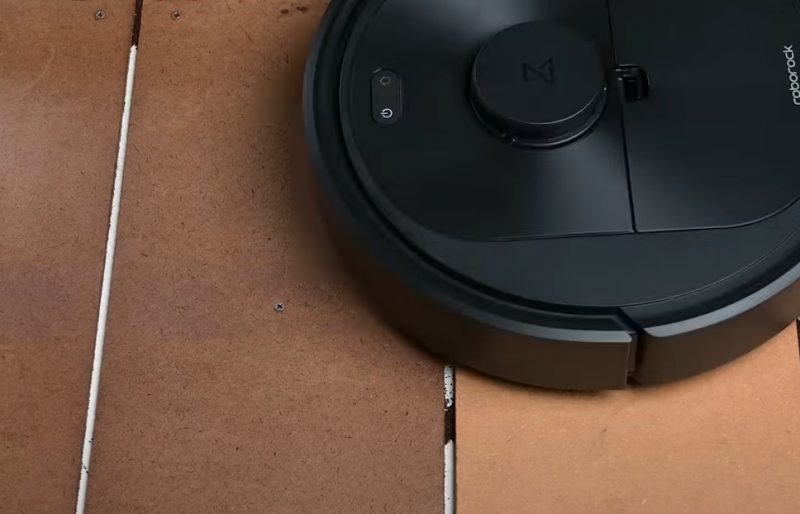
Pet hair
Both of them exhibit good pet-hair pick-up performance as all hair strands are collected effortlessly in one or two passes. Nevertheless, they demonstrate different hair-resistance efficiency. The Q7 shows to be better in reducing the amount of hair tangling around the main brush.
| Hair-resistance (%) | Roborock Q5 | Roborock Q7 |
|---|---|---|
| 5-inch strands | ~70% | ~73% |
| 10-inch strands | ~20% | ~41% |
Design & Convenience
Winner: Roborock Q7
Dimension & Capacity
These two robot vacuums are similar in shape and dimension. Their total height, including the LiDAR component, stands at approximately 4 inches. As a result, they might not be able to navigate effectively under furniture with a clearance of less than 4 inches. This limitation is essential to consider when deploying these robots in spaces with lower-profile furniture.
However, the Roborock Q7 is superior for its significantly larger dustbin capacity of 750 ml, while that of the Q5 is just about 470 ml. The dustbin of the Roborock Q7 is even the largest among the robot vacuums I’ve tested.
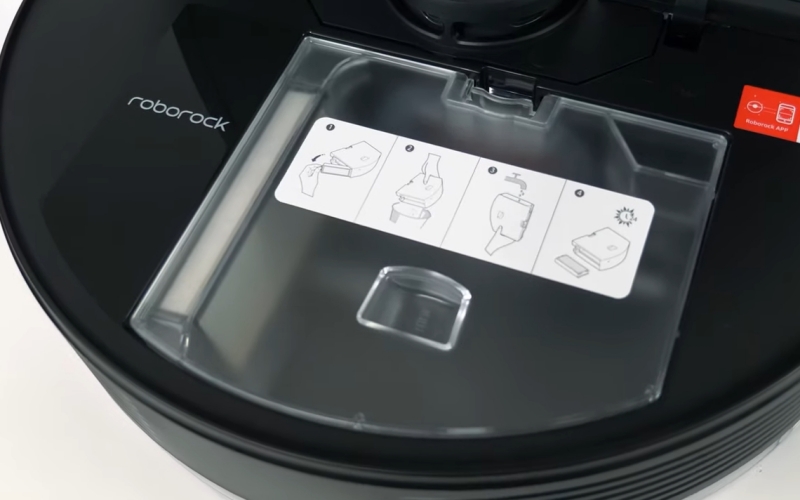
Brush roll system
The Roborock Q7 has a single main brush and one 5-prong side brush, similar to the brush system of the Q5. However, the difference comes in the main roller design: the Q7 features an all-rubber main roller, while the roller of the Q5 is a combination of bristle brushes and rubber fins. The all-rubber roller is more beneficial to hair resistance than the combo brush, like that of the Q5. Therefore, the Q7 outperforms the Q5 in the hair resistance test, as I demonstrated above.
Luckily, the Q5’s housing is compatible with the rubber roller of the Q7. In other words, I can purchase a new rubber brush roller on the brand’s official website, similar to the one on the Q7, and insert it into the Q5’s housing. Furthermore, if you don’t have a specific need for the mopping feature, I find this way can save about $100 compared to investing in a brand-new Q7 model.
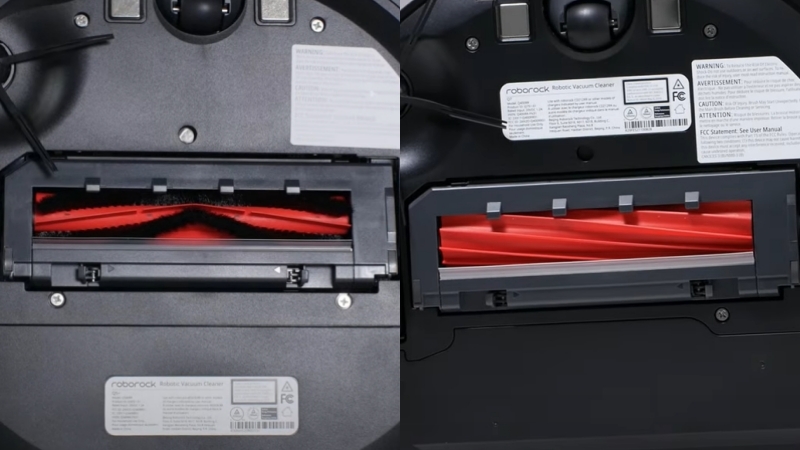
Navigation & Obstacle avoidance
- Navigation & Mapping
One common challenge with both these models is that they are equipped with LiDAR towers on the top, which can occasionally lead to issues in cases where there’s limited clearance between the floor and the bottoms of furniture. Their total height, including the LiDAR component, stands at approximately 4 inches. As a result, they might not be able to navigate effectively under furniture with a clearance of less than 4 inches. This limitation is essential to consider when deploying these robots in spaces with lower-profile furniture.
Roborock Q7 and Q5 both employ LiDAR technology for precise navigation, using the laser to map the layout of your home. Their laser LiDAR tower stands out for its exceptional effectiveness in recognizing objects and furniture, surpassing other navigation technologies in the industry. This means they don’t rely on ambient light to perceive their surroundings, allowing them to operate effectively even in dimly lit or dark environments.
Both the Roborock Q5 and Q7 impress with their swift mapping capabilities, typically charting your home in just an hour during their first cleaning run. Besides, with the quick mapping feature, both of the Q7 and Q5 can shorten the time of creating the floor plan without cleaning. As tested, they finished mapping the entire first-floor level within about 25 minutes. The time will vary depending on how large your house is.
Furthermore, the ability to save up to four distinct floor plans provides valuable flexibility, enabling me to select specific rooms and floor levels for cleaning. Additionally, I particularly appreciate the wall sensor of these Roborock models because it helps guide the robots along walls without unnecessary collisions. Moreover, their advanced cliff sensors ensure they steer clear of potential stairway hazards, enhancing their safety and reliability.
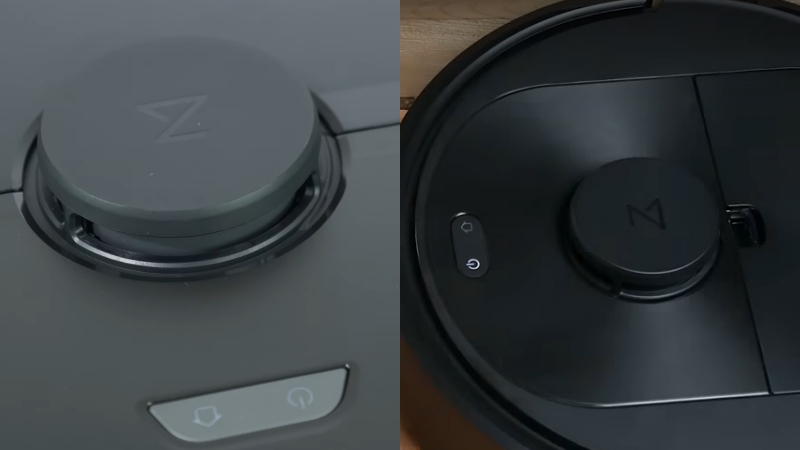
Obstacle avoidance
In my experience with the Roborock Q7 and Q5, I noticed that both of these robot vacuums lack obstacle detection capabilities, which can be a bit limiting in their usability. When it comes to avoiding items scattered on the floor, if these items’s height is not enough for the LiDAR to scan, or too light for the robot’s bumpers to detect, the robots will bump into them.
Throughout my testing, it became evident that neither of them possessed the ability to avoid common objects like cords, socks, or cleaning cloths. So, make sure the floor is clear of items before running the Q7 and Q5.
Furthermore, it’s important to be aware that they won’t steer clear of pet waste either. For households with pets, especially if pet waste is a concern, you’ll need to handle the cleanup yourself; otherwise, these robots might inadvertently spread the mess around your floor.
Battery life
The Roborock Q5 and Q7 all come with 5200mAh batteries, boasting a maximum of 180-minute runtime on a single charge. In reality, the bots’s runtimes fluctuate between 100-185 mins, depending on the power mode I chose. The max power will have the shortest runtime, about 100 minutes. Additionally, the Q7 and Q5 feature a resume function, allowing them to continue the cleaning where they leave off after sufficiently recharging.
| Roborock Q7 | Roborock Q5 | |
|---|---|---|
| Capacity | 5200 mAh | 5200 mAh |
| Battery life | ~ 100-180 minutes | ~ 100-180 minutes |
| Charging time | ~ 6 hours | ~ 6 hours |
Control
Tie!
The Roborock Q7 and Q5 have the same number and position of control buttons on the top. Their two pushing buttons include Power/Clean and Dock home functions. They do not feature the child-lock functioning button like the higher-priced models, such as the Q7 Max/Max+ or the S7/S7+.
These two bots support wifi connectivity, enabling control via the compatible app on user’s smartphones. What is more, I find it very convenient that I can effortlessly command these robots using popular voice assistants such as Alexa and Google Home.
One standout feature of the app is its ability to modify the house floor plans after Q7 and Q5 create the entire map. In particular, I can flexibly label, divide, or merge rooms to match my actual home design. If there are places where I need to keep the bots away from entering, I can put no-go zones and invisible walls. Moreover, I can direct these robots to clean specific rooms or zones instead of cleaning the entire house, conserving battery life and enhancing efficiency.
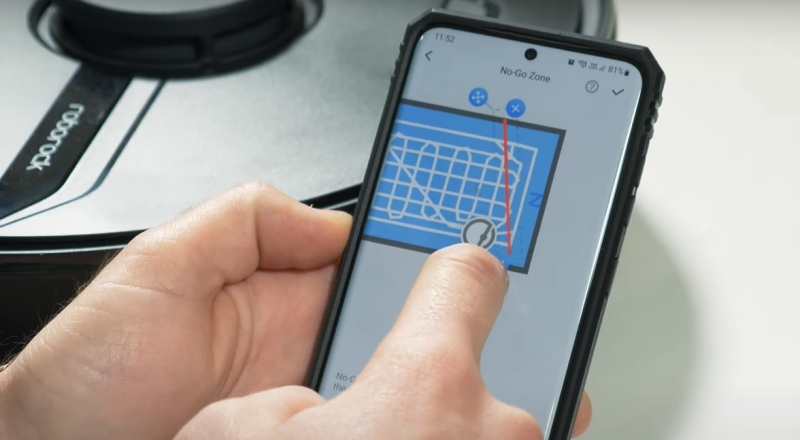
Another noteworthy feature of the app is its support for saving multiple floor plans, accommodating up to 4 floor levels. Additionally, the app offers a 3D mapping feature, which I find visually helpful but doesn’t contribute significantly to practical functionality.
Scheduling cleaning sessions is a breeze with the app, and I appreciate the ability to create distinct cleaning schedules for different rooms, adding an extra layer of convenience to the process. The app also provides a detailed cleaning history, enabling me to track when, where, and how long the robots have been active, which is an excellent tool for maintaining cleanliness efficiently.
Cleaning & Maintenance
Tie!
The Roborock Q5 and Q7 feature the same filter system, using the brand’s E11 filters with the capability of capturing 95% microdust. The E11 filter is not as efficient as the HEPA filter (filtering 99.9% microdust and allergens) but has a greater filtering efficiency than many filter types. Moreover, their E11 filters can be washed with tap water, which is a plus for easy cleaning and maintenance.
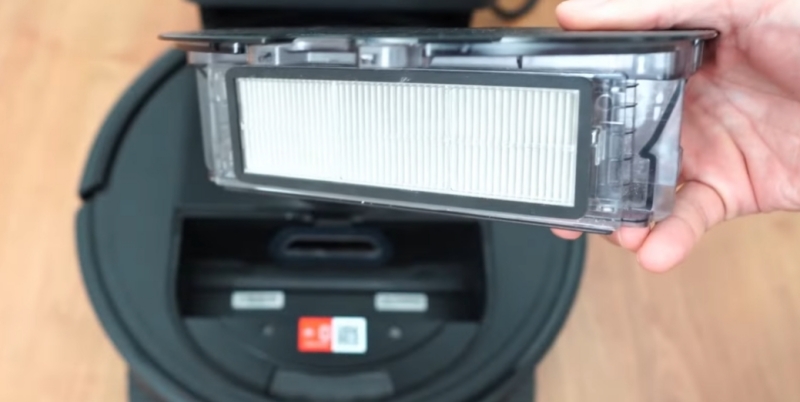
Additionally, the Q7 and Q5 are compatible with the self-empty dock. With the self-empty dock, emptying the bots’ dustbin is hand-free and free of dust clouds, very helpful for people suffering from allergies. This type of dock uses a disposable dust bag with a capacity of 2.5 L, holding dust for about 6 weeks, so I don’t need to replace the dust bag daily. Yet, it still adds on recurring costs for purchasing dustbag packs periodically.
Plus, I need to perform several simple cleaning tasks with these both every other week, including removing the hair on their brush rollers and wheels, wiping the dust on their sensors with soft a cloth, and rinsing the filter and dustbin of the bots. These steps help ensure their working efficiency in the long run.
For the Q7, as it has the mopping mode, I need to wash its cleaning pad after every run to avoid the bot dragging dirt on the floor in the next run. I also have to check the water level in their liquid tank so that its mopping process is not disturbed. Moreover, I only use tap water for the Q7’s water tank, not the cleaning liquid, because I am afraid of damaging the bot’s internal parts.
Other features
Winner: Roborock Q7
Noise levels
| Roborock Q7 | Roborock Q5 | |
|---|---|---|
| Working | ~61 – 78 dB | ~62 – 79 dB |
| Self-emptying | N/A | N/A |
The noise the Roborock Q7 and Q5 generate is not different, falling between 60-80 dB, depending on the power level and cleaning surfaces. They will be louder when working on carpeted floors or utilizing max suction power.
Mopping function
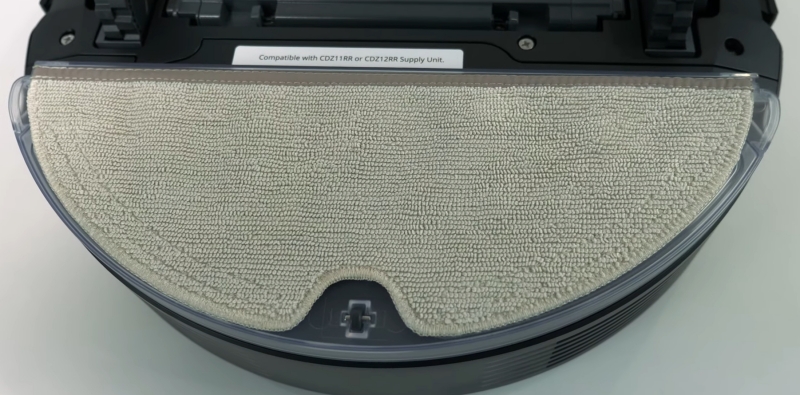
The Roborock Q7 is significantly different from the Q5 model for its mopping function. The Q7 does not boast a sonic mopping but a passive one. It means the bot only drags the wet mopping pad in its running path. Thus, its performance is just so so, not really impressive. It is okay for keeping the house clean every day but not efficient for eliminating liquid stains on the floor.
However, the Q7 does not automatically lift its mop when encountering rugs and carpets. So, I have to create the no-mop zones in the app for the carpeted areas in my rooms.
Quick Rundown of Roborock Q7
Quick Rundown of Roborock Q5
- 【Deeper Cleaning with Powerful 2700Pa Suction】: Roborock Q5 is the upgraded version of S4 Max.With powerful 2700Pa suction, the Roborock Q5 easily picks up pet hair, dust and finer dirts from floors or carpets. When a carpet is detected, it will automatically increase its suction to the maximum for deep cleaning.
- 【Convenient App Control】: Control every element of Q5 through the Roborock app, including viewing the exact vacuuming route, setting cleaning schedules, adjusting the suction power, creating No-Go Zones, Invisible Walls, and much more. All from anywhere you have internet.
- 【Precision Mapping with PreciSense LiDAR】: LiDAR navigation creates accurate maps, and Q5 can save up to 4 maps. Use 3D Mapping to view your home in 3D and add furniture and floor materials to recreate your home virtually.
- 【Handle Large Homes Easily】: 180mins runtime using a large onboard battery means up to 3230 sqft of cleaning on a single charge. A Large dustbin (470ml) means less emptying so you can tackle a large home without pause.
- 【Close to Floors】: The multi-directional floating rubber brush stays close to the ground, ensuring effective cleanup even on uneven surfaces.
Product Videos
Related Articles to Roborock Q7
- Roborock Q7 Vs Q Revo: Which Option Suits You Best?
- Roborock Q7 Max Vs Q7: What Does The “Max” Label Refer To?
Related Articles to Roborock Q5
- Roborock Q5 Vs Shark AI Ultra: A Head-To-Head Comparison
- Roborock Q5 Vs Q7 Max: An In-Depth Analysis
- Roborock Q5 vs Roomba I3: Clean Homes Powerhouse Face-Off!
- Roborock Q5 Vs Eufy X8: What Is The Difference?
- Roomba S9+ Vs Roborock Q5: Which One Should You Get?
- Roborock Q5 Vs S7: Both Have Excellent Performance But… Are Upgrades Worth?
- What Is The Difference Between The Roborock Q5 Vs Q5+?
- Roborock E5 Vs Q5 Detailed Comparison Review
References:
- Roborock Q7: https://global.roborock.com/pages/roborock-q7
- Roborock Q5: https://us.roborock.com/products/roborock-q5

Richard B. Schmidt is a prominent figure in the vacuum cleaner industry, boasting over 15 years of expertise. Armed with a Robotics Engineering degree from Northeastern University and a Master’s in Consumer Science from Harvard, his unique blend of technical knowledge and consumer insights positions him as a sought-after authority in vacuum cleaner evaluation. Richard’s career began at Dyson, where he contributed to the development of innovative vacuum models. Transitioning to advocacy and reviews, he co-founded the first Vacuum-focused blog in 2008, offering comprehensive analysis and user guides for various vacuum cleaners. In 2020, he founded RoboMop.net, providing ongoing insights through columns and buyer’s guides.
